Sonos Arc soundbar makes jump to Dolby Atmos audio
- Published
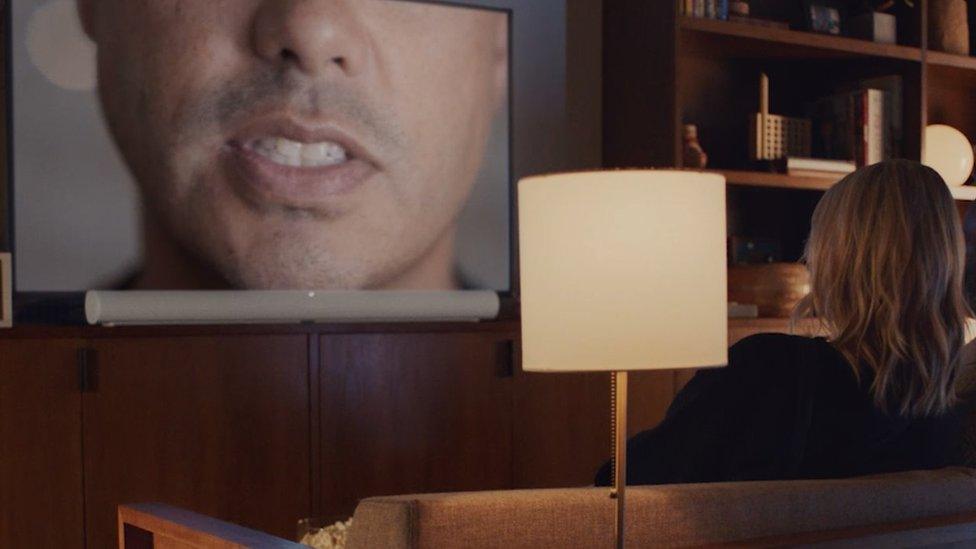
Sonos has announced a new flagship soundbar with the latest surround-sound technology.
The Sonos Arc is the firm's first model to incorporate Dolby Atmos - which bounces audio off the ceiling to create the impression that sounds are being emitted from different heights.
The launch comes nearly five years after Yamaha was first to bring an Atmos soundbar to market.
Sonos may benefit from the coronavirus having caused many cinemas to close.
But company watchers have warned that people's concerns about their jobs and personal finances may deter them from buying such a premium-priced product at this time.
"At the beginning sort of the lockdown period, we did see an uptick in demand for products like TVs," said David Watkins, an analyst at Strategy Analytics.
But, he added, in April and May, "we've seen that demand start to really soften and fade away" as consumers realise how long the impact of the pandemic may last.
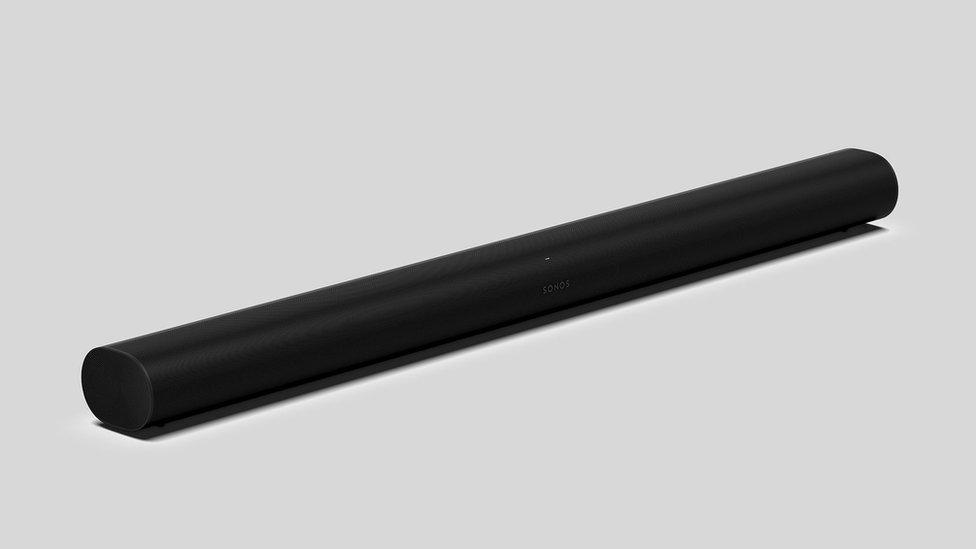
The soundbar packs in 11 audio drivers, including two upward-firing speakers to bounce off the ceiling for Dolby Atmos
Tom Parsons, reviews editor at specialist publication What Hi-Fi, said it should be a great time to launch a new home theatre product, when "no-one's allowed to go to the real cinema".
"That said, these are also uncertain times for a lot of people, and forking out £800 on a luxury item such as this is going to take some serious consideration," he added.
Last month the bank Goldman Sachs cut its rating on Sonos's stock from buy to sell, predicting it would suffer a 50% year-on-year drop in sales during the shutdown months.
The firm's other speakers face competition from Google and Amazon, which have launched wireless-linked ranges of their own that are sold at lower prices.
Cinematic experience
The Sonos Arc replaces its Playbar, which had not had a hardware update since being launched in 2013.
It will cost £799 when it goes on sale on 10 June.
While that represents a £100 price increase on the earlier model, it is still cheaper than some Atmos-enabled rivals. Sennheiser's Ambeo Soundbar, for example, retails for £2,199.
Atmos is already used in cinemas, and allows much more precise placement of sounds in a three-dimensional space than traditional surround-sound - including overhead. High-end cinema set-ups can use hundreds of speakers, and a mixing engineer can carefully "place" the audio in the space.
High-end home audio setups with expensive audio-visual receivers can already use Atmos, and the software that powers it is even available on some smartphones. The technology is also used in games, where sound sources are pinned to dynamically moving digital objects.
But Mr Parsons said such implementations either tend to be "rather complicated" or not the "true" Atmos experience, when played through cheap headphones, for example.
"Sonos is looking to provide that true Atmos experience with a device that anyone can set up and use, using a single HDMI cable," he said.
"It's a tall order, but you wouldn't bet against the company, given its track record."
Out with the old
There is a downside to delivering the technology in a new flagship product: it requires new software, which the company said in January would require dropping support for older devices. The new products cannot be used in the same synchronised system with older ones, which many users spent significant sums on - prompting a furious backlash.
"I think this is going to be a pretty interesting test of loyalty to the Sonos brand from existing customers," Mr Watkins said.
But he added that the company has to stay at the forefront of premium technologies.
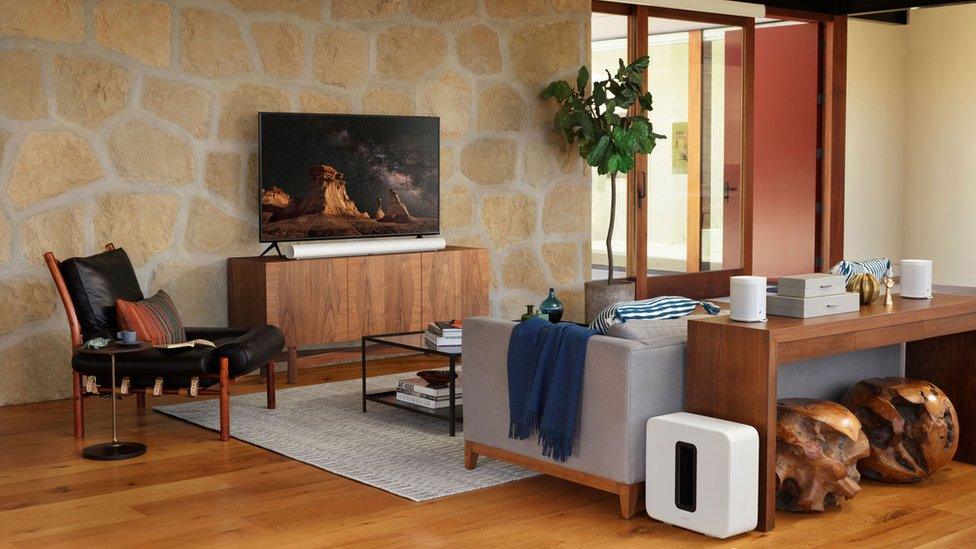
"Sonos has built its brand around that sort of premium luxury audio," he said, adding that it had been "under pressure" in the smart speaker market because technology giants sell their own products so cheaply.
"Sonos is not going to become in my own mind… the dominant player within the home audio business. I think that position really sits with Amazon or possibly Google," he said.
But Sonos integrates with both, and can "continue to dominate the premium category… particularly, if they move increasingly towards home theatre and soundbars."
On top of the announcement of the Arc, Sonos also announced smaller updates to its existing Play:5 speakers, designed for music, and its "Sub" Subwoofer product.
Those products release on 10 June alongside the Arc, at £499 and £699 respectively.
- Published24 January 2020
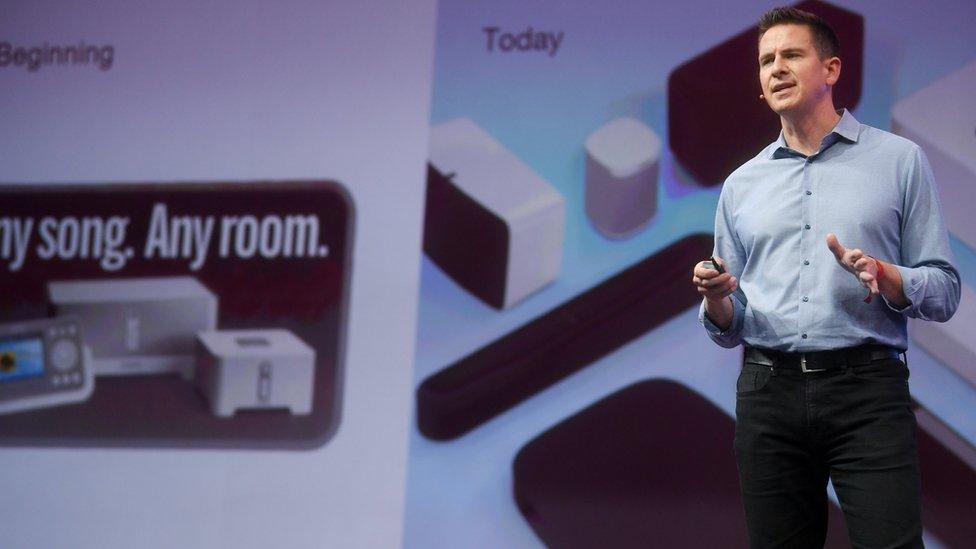
- Published30 January 2020
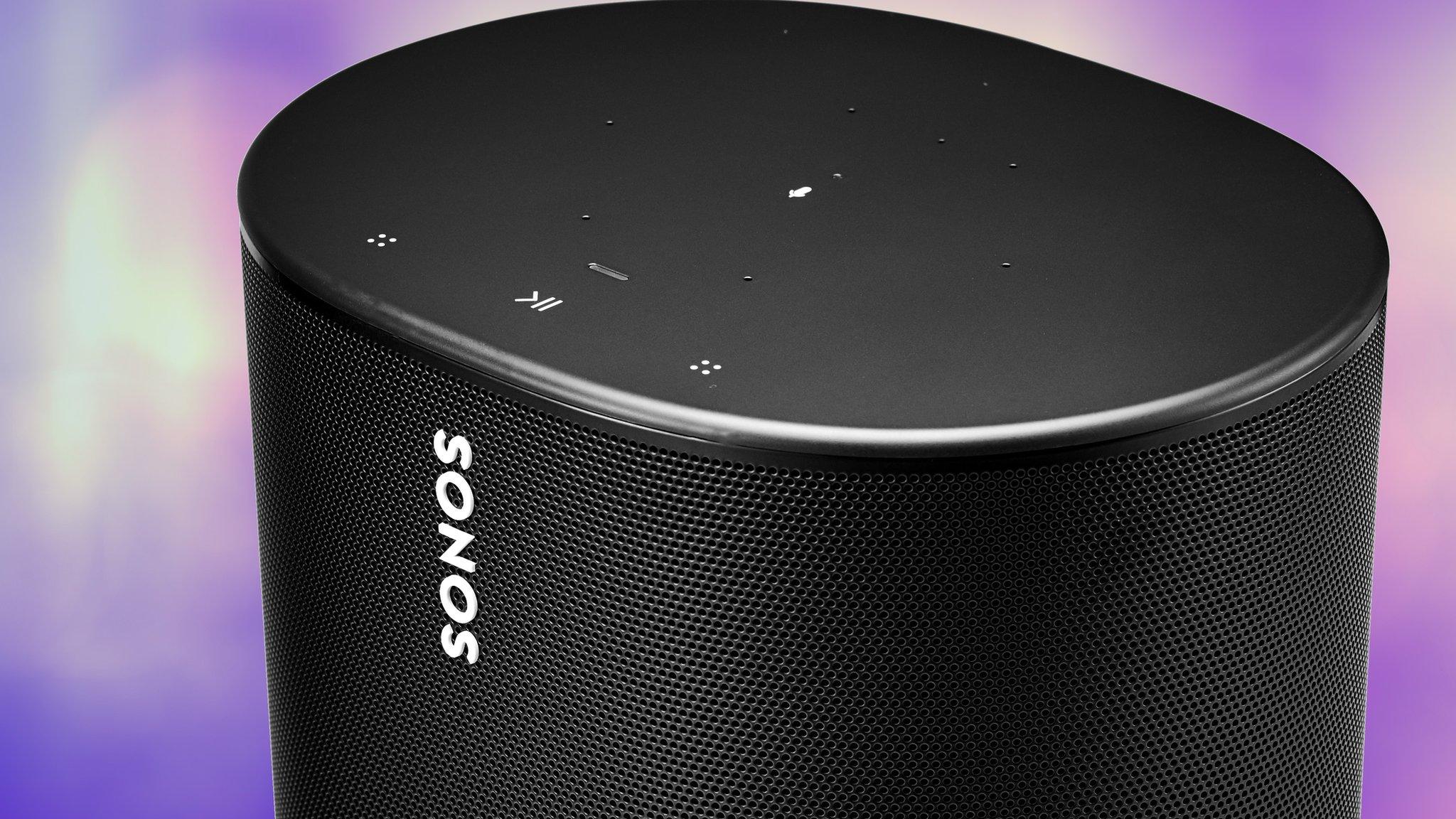
- Published6 March 2020
